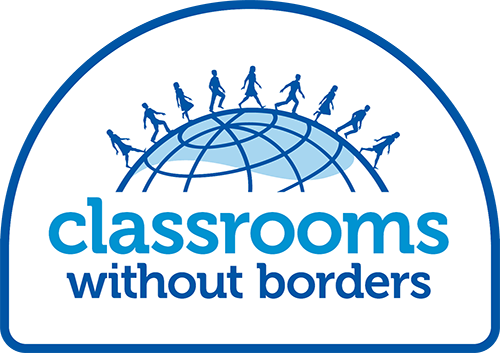This past week, I had the pleasure of accompanying approximately 75 educators and students on a Classrooms Without Borders tour of Poland. Now that I’ve had some time to decompress (both physically and mentally), I’d like to offer a few thoughts on my experience.
I began this journey with somewhat mixed expectations. On the surface, I felt like I had a pretty solid grasp of the Holocaust. My graduate specialization was in Modern Europe, I’ve read all the relevant historiographical literature, and I’ve been teaching courses on the Second World War at the Graduate and Undergraduate level for fifteen years. I’ve never paid much credence to the idea that one has to “experience” historical sites in order to understand fully the past. I knew I’d enjoy getting to tour all of these historical sites, but I had my doubts about how much I would learn.
Two hours at Treblinka shattered that naiveite.
A textbook or classroom lecturer can rattle off the process of the death camps: the emptying of the ghettos, the cramped trains, and of course the iconic gas chambers. Pie charts and graphs can depict the various death counts of the camps. And certainly photographs, often taken with remarkable lack of shame by the SS and other perpetuators, can convey some of the horrors of mass killing.
But none of this prepared me for Treblinka.
It’s hard to describe this camp, as the Germans eliminated all traces of their presence. The center of the camp is now a massive stone monument, surrounded by thousands of smaller stones representing villages from Poland, Bulgaria, the former Yugoslavia, and beyond. At one of these stones, we held a short remembrance ceremony for Howard Chandler’s village of Starachowice (a moment I’ll never forget).
Otherwise Treblinka is defined by a weird sense of intentional ambiguity. The wooded area surrounding the center of the camp seems rather peaceful to the outside eye, with birds chirping and no sounds of automobiles or other invasive signs of modernity.
What struck me the most, though, was the small size of this infamous death camp. I think I was expecting the kind of sprawling grounds that characterize larger sites such as Auschwitz. However, this camp was squeezed into an area the size or two or three football fields. The time of prisoners at Treblinka could be measured in mere minutes, as they made their way from the train platform to the gas chamber, with their naked bodies unceremoniously disposed in a mass burn pit.
I arrived at Treblinka knowing it was the site of approximately 800,000 murders—a symbol of the mechanization of mass murder. But I was unprepared for its small scale. I’m having a difficult time expressing this sentiment: perhaps it’s a bit illogical. But to me, it represented the sheer intimacy of evil that defined the Holocaust.
On a lighter note, I’ve spent the last few days also reflecting on how much I learned from my peers. I had the good fortune to spend time with nearly 50 educators from Pennsylvania, California, Ohio, North Carolina, Florida, and Texas. These included History teachers, but also teachers of Music, Math, Art, English, and Journalism. So much of my learning experience came from our conversations on the bus, over a pint of beer, or through our dinnertime reflections.
As a university instructor, I don’t get to spend much professional development time with teachers in secondary schools, and I was absolutely amazed at their dedication, creativity, and resolve to maintain the best standards in the face of constant assaults on education. I applaud Classrooms Without Borders for taking these “best of the best” teachers and providing them with this experience.
I left Pittsburgh not sure what to expect out of this trip, and returned with an entirely new perspective on teaching. I’m also aware that the job isn’t over, and I’m looking forward to using this experience to give back to the community. I’m so grateful to Classrooms Without Borders and Duquesne University for this life-changing opportunity.
